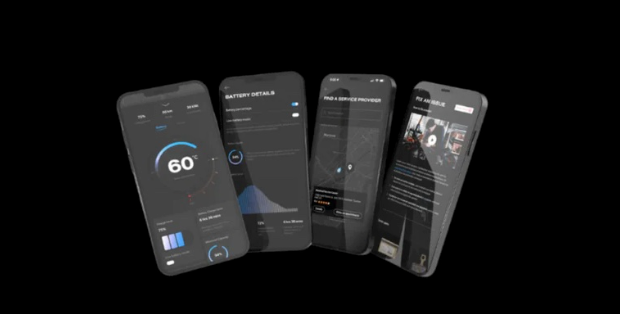Did the rain catch you by surprise? There's no reason to panic yet! At least in most cases, electric scooters are designed to withstand an occasional shower. Unless you want to treat it like an amphibious vehicle, you shouldn't have any problems getting home. But it's better to err on the side of caution and know what you can and can't do with your e-scooter.
Understanding water resistance
Have you ever wondered why your electric scooter isn't labeled "waterproof" but instead boasts "water resistance"? Grab your snorkeling mask because we're about to dive into the not-so-deep end of water resistance!
Water-resistant vs. Waterproof
First things first: water resistance and waterproofing are not the same thing. It's like comparing a raincoat to a submarine - both deal with water but in completely different ways.
Water resistance: This is your raincoat. It'll keep you dry in a drizzle or even a decent rain shower, but jump into a pool and all bets are off. Water-resistant devices can handle some exposure to water but have their limits.
Waterproof: This is your submarine. Theoretically, it can be submerged indefinitely without letting water in. However, in the world of consumer electronics, true waterproofing is a rarity.
So when we talk about electric scooters being water-resistant, we're saying they can handle some wet conditions, but they're not ready for 20,000 Leagues Under the Sea, yet. Unless, of course, besides an electric scooter, you own a submarine. So, are electric scooters waterproof? It's a hard No.

The importance of water resistance in everyday use
Now, you might be thinking, "Why does water resistance matter? I'm not planning to ride my scooter through a car wash!" But water resistance is crucial for several reasons:
Unexpected weather: Mother Nature loves a good surprise. One minute, you're cruising under clear skies; the next, you're in the thick of a downpour. Water resistance helps ensure your scooter doesn't peg out at the first sign of rain.
Puddles and splashes: Unless you have the skills of an F1 driver, you're bound to hit a puddle now and then. Water resistance helps protect your scooter from these unexpected splashes.
Humidity and condensation: Water sometimes comes from less obvious sources. High humidity or temperature changes can lead to condensation, which can be just as harmful as rain if your scooter isn't prepared.
Peace of mind: Knowing your scooter can handle a little moisture means you're not constantly watching the sky anxiously every time you go for a ride.
Remember, water resistance isn't an invitation to recreate "Singin' in the Rain" on your electric scooter. It's a safety net, giving you the confidence to enjoy your rides without worrying that a few droplets will turn your high-tech electric scooter into an expensive paperweight.
The role of IP ratings

Ever wondered what IP stands for? Or for that matter, what do those numbers even mean?
What in the world are IP ratings?
IP stands for "Ingress Protection,". It's an international protection rating system that shows how well a device resists intrusion from foreign objects (like dust) and liquids (like water).
Breaking down the IP ratings
IP ratings consist of two numbers, each telling its own thrilling story:
The first digit (ranging from 0 to 6) represents protection against foreign solid objects like dust, debris, and dirt.
The second digit (ranging from 0 to 9) indicates how well the device resists water. It determines whether it can handle low or high-pressure water jets.
Common IP ratings for e-scooters: What do they mean?
Now, let's look at some IP ratings you might see on e-scooters and what they mean for your rides:
IP54: The "I Can Handle a Drizzle" Rating
5: Dust protected (not completely dust-tight, but close)
4: Protected against splashing water
IP65: The "Not afraid of the Rain" Rating
6: Dust-tight (No dust getting in here!)
5: Protected against water jets
IP66: The "I Laugh at Puddles" Rating
6: Dust-tight
7: Protection against direct high pressure jets.
NOTE: Please remember that even though scooters are water-resistance, they can not withstand water in long periods of time, they can get wet but need to be dried up immediately after contact with water. This also refers to the scooter AS NEW, if the scooter has been opened before, the water-resistance rating no longer applies since the seals have been broken.
What does this mean for your e-scooter adventures?
IP54: Feel free to ride in light rain, but avoid heavy downpours and deep puddles—most electric scooters.
IP65: You're good for many weather conditions, including rain. Just don't go for a swim. And dry it up immediately after it gets wet!
IP66: Rain or shine, your electric scooter is ready for wet weather, but it's still vulnerable to continuous submersion. But remember, you'll need to dry it as soon as possible.
NOTE: Please remember that even though scooters are water-resistance, they can not withstand water in long periods of time, they can get wet but need to be dried up immediately after contact with water. This also refers to the scooter AS NEW, if the scooter has been opened before, the water-resistance rating no longer applies since the seals have been broken.
Remember, while these IP ratings give you a good idea of what your e-scooter can handle, it's always best to err on the side of caution.
Key features of water-resistant electric scooters
So, you want an e-scooter that won't turn into an expensive paperweight at the first hurdle? Let's dive into the key features that make some electric scooters more water-resistant than others.
Sealed battery compartment
The lithium-ion battery is the heart of your e-scooter and it doesn't play well with water. A sealed battery compartment is crucial for several reasons:
- Prevents short circuits: Water and electricity are a match made in hell. A sealed compartment keeps them apart.
- Maintains battery life: Moisture can degrade battery performance faster, so it's best to keep it out.
- Ensures safety: Water + Lithium-Ion Battery = A formula for some unwanted fireworks. Let's keep the fireworks for New Year's, shall we?
Water-Sealed Connectors
Connectors are the nervous system of your e-scooter, transmitting vital signals and power. Water-sealed connectors are designed to keep moisture out:
- Rubber grommets: These act like little umbrellas for your connectors.
- Silicon sealants: These waterproof sealants protect your scooter's electronics from the elements.
- IP-Rated connectors: Some high-end scooters use connectors with their own IP ratings.
Remember, a chain is only as strong as its weakest link. One unsealed connector can turn your ride into an impromptu shower.
Fender Design
Fenders serve multiple purposes:
- Rider protection: Keeps you from looking like you've just completed a mud run when you arrive at your destination.
- Component shield: This shield protects vital parts from direct splashes. It's like an umbrella for your scooter's undercarriage.
- Reduced maintenance: Less water and grime on your scooter means less cleaning and maintenance for you.
Look for scooters with extended fenders that cover a good portion of the wheel. The more coverage, the drier you (and your scooter) stay.
Solid Frame Construction
A solid frame isn't just about looking tough; it's about being tough, especially against water:
- Corrosion resistance: Materials like aluminum or treated steel resist rust and corrosion, even when exposed to moisture.
- Fewer entry points: A well-constructed frame has fewer joints and seams where water can sneak in. It's like having fewer doors for rain to knock on.
- Better sealing: A solid frame allows for better integration of other water-resistant features, creating a more cohesive defense against moisture.

Protecting your e-scooter from water damage
As an e-scooter owner, understanding and mitigating water damage risks is crucial. Here's what you need to know to keep your ride safe and long-lasting:
Quick action checklist (Post-water exposure)
✅ Turn off the power immediately
✅ Remove the battery if possible
✅ Dry the scooter thoroughly with a clean cloth
✅ Use compressed air to blow out water from crevices carefully
✅ Leave to air dry in a warm, dry place for 24-48 hours, or until fully dry
✅ Check all systems before powering on again
Maintenance tips for longevity
- Regular inspections: Check seals and gaskets monthly
- Proper storage: Use a breathable, water-resistant cover when storing outdoors
- Timely repairs: Address any water damage immediately to prevent long-term issues
- Upgrade opportunities: Consider aftermarket water-resistant accessories for added protection
Note: Mind you, breaking the seal on your e-scooter (e.g., due to opening the deck) can affect its water-resistance rating, rendering it effectively more prone to water damage.
The importance of water resistance in electric scooters
Water resistance is a critical feature for electric scooters, primarily impacting safety and durability. Regarding safety, water-resistant e-scooters significantly reduce the risk of electrical malfunctions in wet conditions, preventing potential short circuits or internal component failures that could lead to accidents. This feature ensures consistent performance of critical systems like brakes and lights, even in adverse weather.
Durability is also enhanced, as water resistance protects vital components such as the battery, motor, and control board from moisture-induced damage. Industry data indicates that water-resistant models can last up to 40% longer than non-resistant versions, reducing the frequency of repairs and replacements.
The importance of water resistance extends to performance reliability and technological advancement. Water-resistant e-scooters maintain consistent operation in various weather conditions, from light rain to high humidity, making them suitable for year-round use.
As e-scooter technology evolves, incorporating more sophisticated electronics and smart features, water resistance becomes increasingly crucial for protecting these advanced components. Models with high IP ratings (IP65 or above) offer the best protection, capable of withstanding heavy rain and brief submersion.
For consumers, prioritizing water resistance when selecting an e-scooter ensures a safer, more durable, and more reliable vehicle, suitable for diverse environmental conditions and long-term use.
Why choose Apollo scooters?
Apollo scooters stand out in the electric scooter market due to their exceptional water resistance and overall quality. With an impressive IP66 rating, Apollo scooters offer superior protection against water and dust ingress, surpassing many competitors in the industry.
This high level of water resistance ensures reliable performance in various weather conditions, enhancing both safety and durability. Beyond water resistance, Apollo's commitment to premium quality is evident in their robust construction and advanced features, contributing to extended longevity and reduced maintenance needs.
This combination of top-tier water resistance and premium build quality results in high customer satisfaction, making Apollo scooters a prudent choice for riders seeking a dependable, long-lasting electric scooter solution
Conclusion
Water resistance in e-scooters isn't just about braving the rain. It's about reliability, longevity, and getting your money's worth. When the weather is unpredictable and urban environments are challenging, a water-resistant e-scooter isn't a luxury—it's a necessity. Choose wisely, ride confidently, and let nothing stop you on your journey.
FAQ
Q1: Are electric scooters completely waterproof?
A: No, there's no such thing as a fully waterproof electric scooter. However, they have varying degrees of water resistance.
Q2: What does IP rating mean for electric scooters?
A: IP (Ingress Protection) rating measures a scooter's resistance to dust and water. The first digit represents dust resistance, and the second represents water resistance.
Q3: What's a good IP rating for riding in light rain?
A: An IP54 rating is standard and suitable for light rain and splashes. Avoid puddles and never immerse the scooter.
Q4: Can I ride my electric scooter in heavy rain?
A: Scooters with higher ratings like IPX5 or IP66 can tolerate heavier rainstorms. However, it's always best to avoid riding in severe weather conditions.
Q5: What precautions should I take when riding in wet conditions?
A: Wear rain gear, slow down, avoid deep puddles, and wipe down your scooter after the ride. Also, check the weather forecast before heading out.
Q6: How does water damage affect electric scooters?
A: Water damage can cause corrosion, rust, decreased performance, reduced battery life, and potential malfunction of crucial components like the battery, motor, and electronics.
Q7: How can I maintain my electric scooter to prevent water damage?
A: Regularly inspect and tighten connectors, keep the scooter clean and dry, store it in a dry place, and follow the manufacturer's maintenance guidelines.
Q8: Are Apollo electric scooters water-resistant?
A: Yes, all Apollo electric scooter models have an IP66 rating, making them highly resistant to dust and capable of withstanding heavy rainstorms and deep puddles.
Q9: Can I submerge my electric scooter in water if it has a high IP rating?
A: No, even scooters with high IP ratings should never be fully submerged in water. Always avoid this to prevent potential damage.
Q10: How can I check if my electric scooter is water-resistant?
A: Look for the IP rating in the scooter's specifications. If not provided, contact the manufacturer for information on water resistance capabilities.



















